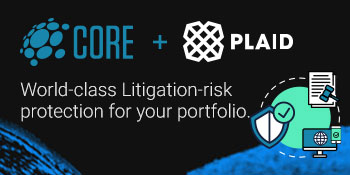Soligenix Reports No Safety Concerns In First DMC Review Of Phase 3 HyBryte Trial For CTCL
Author: Benzinga Newsdesk | October 07, 2025 07:33am
FLASH2 Study Interim Efficacy Analysis Targeted for 1H2026
Enrollment Update Remains on Track for 4Q2025
PRINCETON, N.J., Oct. 7, 2025 /PRNewswire/ -- Soligenix, Inc. (NASDAQ:SNGX) (Soligenix or the Company), a late-stage biopharmaceutical company focused on developing and commercializing products to treat rare diseases where there is an unmet medical need, announced today that its first Data Monitoring Committee (DMC) meeting for its confirmatory Phase 3 study evaluating HyBryte™ (synthetic hypericin) in the treatment of cutaneous T-cell lymphoma (CTCL) has concluded that there are no safety concerns with the ongoing Phase 3 study and that HyBryte™ has an acceptable safety profile that remains consistent with the safety data from all prior clinical studies. The confirmatory Phase 3 FLASH2 (Fluorescent Light Activated Synthetic Hypericin 2) study, builds on the previous statistically significant Phase 3 (FLASH) study, as well as a recent successful comparative study (protocol # HPN-CTCL-04) and an ongoing investigator-initiated study (protocol # RW-HPN-MF-01), each further supporting the design of the FLASH2 clinical trial. With enrollment proceeding well, Soligenix anticipates providing an enrollment update in 4Q2025 and supporting the DMC in undertaking a pre-specified blinded interim efficacy analysis in 1H2026.
FLASH2 is a randomized, double-blind, placebo-controlled, multicenter study that is enrolling approximately 80 subjects with early-stage CTCL. The study replicates the double-blind, placebo-controlled design used in the first successful Phase 3 FLASH study that consisted of three 6-week treatment cycles (18 weeks total), with the primary efficacy assessment occurring at the end of the initial 6-week double-blind, placebo-controlled treatment cycle (Cycle 1). However, this second study extends the double-blind, placebo-controlled assessment to 18 weeks of continuous treatment (no "between-Cycle" treatment breaks) with the primary endpoint assessment occurring at the end of the 18-week timepoint. In the first Phase 3 study, a treatment response of 49% (p<0.0001 vs patients receiving placebo in Cycle 1) was observed in patients completing 18 weeks (3 cycles) of therapy. In this second study, all important clinical study design components remain the same as in the first FLASH study, including the primary endpoint and key inclusion-exclusion criteria. The extended treatment for a continuous 18 weeks in a single cycle is expected to statistically demonstrate the effect of HyBryte™ over a more prolonged, "real world" treatment course.
Posted In: SNGX




